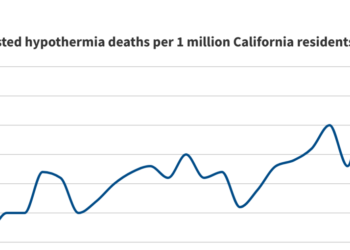Of all extreme weather conditions, heat is the most deadly. It kills more people in the U.S. in an average year than hurricanes, tornadoes and floods combined. The human body has a built-in cooling mechanism – sweat. But that system can only do so much, especially in soaring temperatures with high humidity.
Here’s a look at what happens to the human body in extreme temperatures — and the three main pathways to fatal consequences.
Organ failure caused by heatstroke
When the surrounding temperatures approach your internal body temperature — which is about 98.6 degrees Fahrenheit for most of us — your body starts to cool off through evaporative cooling, better known as sweating. But when it’s very humid out, that sweat won’t evaporate as well and cool you down.
When your body is exposed to heat, it will try to cool itself down by redirecting more blood to the skin, says Ollie Jay, a professor of heat and health at the University of Sydney, where he directs the Heat and Health Research Incubator. But that means less blood and less oxygen are going to your gut. If these conditions go on long enough, your gut can become more permeable.
“So, nasty things like endotoxins that usually reside and stay inside the gut start leaking out of the gut, entering the circulation. And that sets off a cascade of effects that ultimately result in death,” Jay says.
For example, those toxins can activate white blood cells, says Camilo Mora, a climate scientist and professor at the University of Hawaii at Manoa who has researched how heat can turn fatal. “They say, ‘Oh my God, we’re getting attacked right now.’ And the white blood cells are…
Read the full article here







